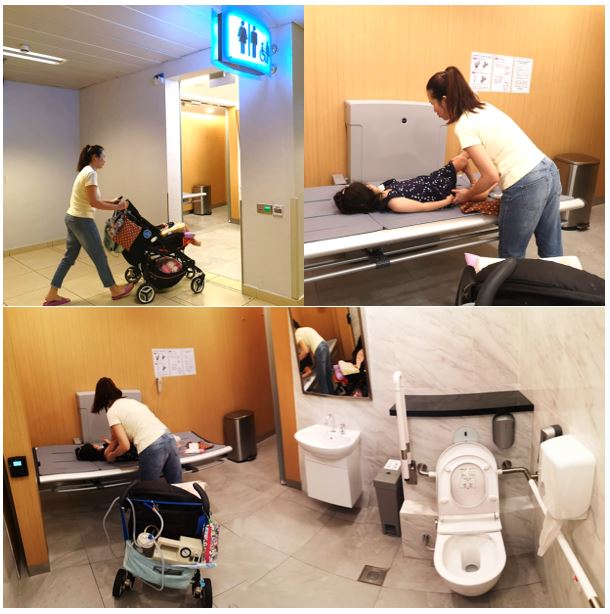For most of us, existing public facilities like footpaths and toilets are sufficient for our needs. However, there are others like Jasmine who struggle to attend to the toileting needs of her non-mobile daughter, Sarah, whenever they are out of the house.

Fortunately, caregivers like Jasmine will soon be able to travel around Singapore with greater peace of mind, knowing that there will be more accessible public changing rooms for her daughter. The latest revisions to the Code on Accessibility now require selected developments to provide accessible changing rooms for persons with severe disabilities, making it easier for them to be changed and cleaned up with dignity.
The Code on Accessibility is intended to help built environment players develop a Singapore with people like Jasmine in mind. First introduced in 1990, the Code has undergone five revisions over the years, and the very latest revision – the Code on Accessibility in the Built Environment 2019 – was launched on 22 April this year after rigorous consultations with relevant government agencies, institutions of higher learning, industry stakeholders and voluntary welfare organisations.
The new revisions to the Code will be implemented from 1 November 2019 onwards, and will apply to all new buildings and existing buildings undergoing Additions & Alterations (A&A).
Singapore’s elderly population is also rapidly increasing, and is expected to reach 21% by 2025. To address the needs of our rapidly ageing population, the 2019 Code has also refined existing requirements to provide more equitable access to the elderly and to persons with disabilities. Such refinements include providing more accessible parking lots within hospitals and shorter ramp runs for easier manoeuvring on wheelchairs.
Thanks to recent advancements in technology, there has also recently been a proliferation of personal mobility aids in Singapore, including motorised wheelchairs and electric scooters. These personal mobility devices allow the elderly and persons with disabilities more autonomy within our urban environment.
To accommodate these changes in personal mobility, the new Code thus includes requirements for larger accessible toilets. Design requirements for accessible lifts have also been refined to allow people to manoeuvre their personal mobility aids with greater ease.
Under the new Code, mandatory provision of lactation rooms will now also be extended to healthcare buildings, larger business parks and mixed developments, giving mothers the opportunity to feed their children or express milk in the comfort of a private space.
For more information about the 2019 Code, visit https://go.gov.sg/accesscode2019.







